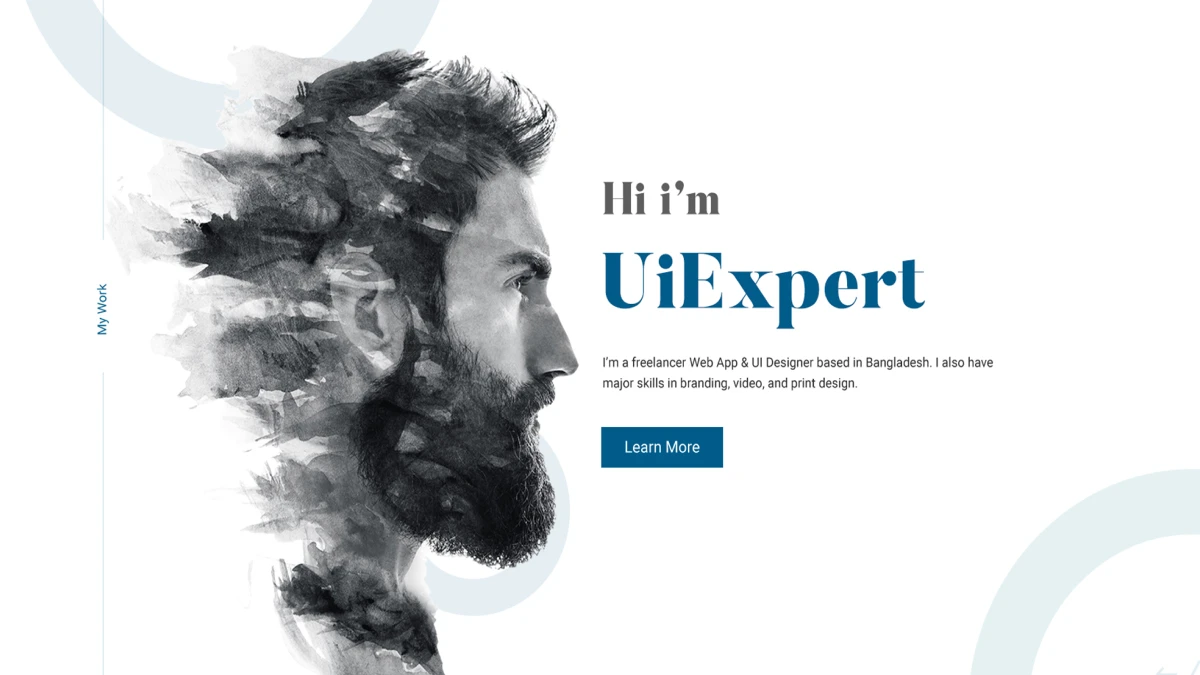
Copywriting: How to Create Engaging Content That Converts
April 2, 2023.
Web design for business in an economic crisis
April 26, 2023.The importance of using white space in web design
The power of white space in web design
The power of white space in web design can be seen if you've ever visited a website and thought, "Wow, this looks clean and organized." The empty space between design components, such as text, images, and other media, is known as white space. The use of white space is a key component in web design, with numerous benefits that can improve user experience and increase interaction. While it may seem counterintuitive to leave parts of a website blank, it has many positive effects.
The importance of using white space in web design
It is impossible to overstate the value of using white space when designing web pages. White space is used to highlight important elements on a web page, such as headlines, images and calls to action, giving the page a clear, clean look. In addition, by giving the eye a break between lines and paragraphs, white space can make text easier to understand.
White space can also exude a sense of sophistication and professionalism, all of which can increase the credibility of a website. In smartphone design, where screens are smaller and clutter can degrade the user experience, the use of white space is especially crucial.
White space and its impact on website usability
White space has many aesthetic benefits, but it can also significantly improve the usability of a website. White space on a page can help users scan and locate the information they're looking for by separating different elements. For sites with a lot of content, such as blogs or e-commerce sites, this can be particularly crucial.
White space can also help establish order on a page. White space can help users navigate a website and improve their overall experience by giving more space to essential elements, such as titles or product images, and less space to secondary elements, such as navigation menus or social media icons.
The benefits of including white space in your website design
The benefits of including white space in your website design are numerous. By using white space effectively, designers can:
- Improve text readability
- Increase the impact of key design elements
- Improve user experience
- Create a sense of elegance and sophistication
- Guide users through the website
- Increase engagement and conversion rates
How to effectively use empty space in web design
While white space can be a powerful tool in web design, it's important to use it effectively. Here are some tips for using white space in your website design:
- Start with a clear layout: Before you start designing your website, draw a rough layout that includes blank space. This will help you see where you can effectively use white space to create a clean, uncluttered look.
- Use white space to create a sense of hierarchy: By giving more space to important elements, such as headlines or product images, and less space to secondary elements, such as navigation menus or social media icons, you can guide users through your website and improve your overall experience .
- Be consistent: Use white space consistently throughout your website to create a cohesive look and feel. This will help create a professional feel and increase the credibility of your website.
- Avoid using too much white space: While white space is important, too much can be overwhelming and make a website feel empty or unfinished. Use white space sparingly and strategically to create a balanced design.
Best practices for white space in web design
To make sure you use white space effectively in your web design, here are some best practices to keep in mind:
- Use a consistent grid: By using a consistent grid system, you can ensure that your white space is evenly distributed throughout your design. This will help create a clean, organized look.
- Choose the right font size and spacing: To make sure your text is easy to read, choose a font size and spacing that works well with your white space. Usually, larger font sizes and more generous spacing work well with enough white space.
- Use contrast: By using contrasting colors, you can make your design elements stand out against the white space. This can help draw attention to key elements and create a more visually interesting design.
- Experiment with different shapes and sizes: White space doesn't have to be rectangular or flat. Experiment with different shapes and sizes to create a more dynamic design.
Minimalist web design and white space
Focusing on simplicity, minimalist web design often uses a lot of empty space to give the site a neat, clean look. For websites with a lot of information or a complicated user interface, a minimalist design can be particularly effective. User experience and website engagement can be improved by using white space to establish hierarchy and guide users through the page.
Examples of large white space in web design
There are countless examples of great white space in web design, but here are a few that stand out:
- Apple: Apple's website is a classic example of minimalist design, with plenty of white space and a focus on clean lines and simple typography.
- Dropbox: Dropbox's website uses white space to create a sense of hierarchy, with large images and titles taking up most of the screen and smaller elements tucked away in the corners.
- Squarespace: Squarespace's website uses white space to create a sense of elegance and sophistication, with a minimalist design that puts the focus on the company's products.
How to balance white space and content in web design
Finding the ideal balance between white space and content is one of the difficulties in using white space in web design. White space can increase readability and create a more aesthetically pleasing design, but too much can make a website look incomplete or bare.
The key is to consider the goals of your website and the needs of your audience to find the right balance. Less white space may be needed when designing an informational website as opposed to one that is mainly intended to sell products. Furthermore, different target audiences may have different preferences regarding the amount of white space in a design.
White space design trends
White space design trends are constantly evolving, but some of the current trends include:
- Big, bold typography: Using big, bold typography on a clean white background can create a striking and memorable design.
- Creative use of negative space: Designers are experimenting with more creative ways to use white space, such as using negative space to create images or illustrations.
- Gradients and color overlays: While white space is often associated with a stark white background, designers use gradients and layers of color to create more depth and visual interest.
The void and user experience in web design
White space in web design ultimately aims to improve the user experience. White space can increase engagement, increase conversion rates and improve the overall user experience by giving a website a neat, organized look and guiding users through it.
In conclusion, white space is a powerful design tool with numerous benefits that can improve user engagement and browsing experience. White space can be used by designers to create a clean, organized look that highlights important design components and raises the authority of a website. A visually appealing and user-friendly website can stand out in a cluttered online environment by using best practices and experimenting with different design techniques.







